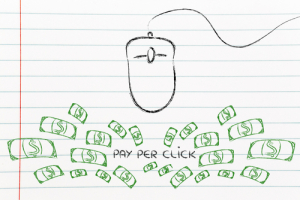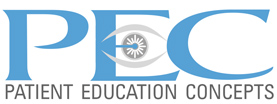
History of PPC with LASIK
Many practices that offer LASIK have tried Pay-Per-Click and found that the key words associated with LASIK can be very expensive because there is so much competition for LASIK searches. In highly competitive markets like Houston, Chicago, and New York, you might have to pay $25 – $50 if someone clicks on your LASIK ad and there is no guarantee that the person that clicked on it will contact the practice. For smaller markets with less competition, the cost per LASIK click is usually much less. It is also interesting to note that the number of searches for LASIK is down nearly 70% in 2015 compared to its peak in 2007. What that tells us is that LASIK is old news and a large percentage of the public already knows about it.
Why PPC Makes Sense for Laser Cataract Surgery
Laser Cataract Surgery is the new thing in ophthalmology and as Baby Boomers turn 65 and start experiencing their vision deteriorating from cataracts, they want to know the difference between femtosecond and manual cataract surgery and how the more advanced IOLs will help them “See Young Again.” People that are searching for cataract information typically either need to have cataract surgery now or they are looking for information for their loved one who has been diagnosed with cataracts. Unlike LASIK tire kickers that may never have LASIK, cataract patients are much more serious shoppers with more definite and urgent needs.
Another reason Pay-Per-Click makes sense for cataract lead generation is that those ophthalmologists that only do manual cataract surgery with monofocal IOLs typically don’t spend money advertising, which minimizes the competition for keywords relating to cataracts. This lack of competition reduces the cost per click and assures most cataract ads will be seen by those searching for cataract search terms.
For cataract Pay-Per-Click ads to convert viewers to office visits and ultimately surgery, the ad must first entice them with an educational opportunity…. not with a “$1000 OFF Your Cataract Procedure” type of offer. Special attention also has to be given to where they land (the landing page) if they do click on your ad. If they are just directed to your website’s home page or to your website’s page on cataract surgery, you will be able to see how many people came to your website from your ad but you won’t know who they are or be able to follow up with them. But if your landing page leads them through the educational process to a point where they have to enter their personal contact information in order to get the final piece of information they want, you have a much more likely chance of converting them to patients.
PPC – Nothing to Fear
For those practices that don’t really understand Pay-Per-Click, if set up properly, you will have total control of how much you spend and when and where you ad will be displayed. For example, you can:
- Set a maximum daily budget: If you want to spend no more than $750 a month, you can allocate $30 per day for clicks. Once $30 worth of clicks are reached, your ad disappears until the next day.
- Choose your target area: You can choose a geographical area by state, county, town name, and zip codes. You can define a radius, in miles, for each of those targets.
- Schedule your ad: Your ad can appear within certain time periods. You can turn it on at 8:00 AM and off at 5:00 PM, Monday through Friday. You can leave it on 24-7 and if all $750 is spent by the 15th of the month, your ad will disappear until the 1st of the next month.
- Set a maximum amount you are willing to pay per click: You can also limit your maximum spend to any amount per click. If you don’t want to spend more than $2.00 per click, you have that control. However, your ad may not be at the top of the list – or it might not be seen at all in a highly competitive market.
- Specify and restrict the keyword terms that show your ad: You want your ad to appear when people in your target area look for “cataract surgery,” but not when they search for “canine cataract surgery.” By defining a list of keywords, you can control what terms show your ad – and with a list of negative keywords, you have control over what search terms prevent your ad from showing.
By now it should be obvious that you have great control over when and how your ad displays – the formula is a very complex one. This is why it is important to have someone set up and manage your Pay-Per-Click campaign…so they can make adjustments in all of these parameters to maximize the effectiveness of your ad and the return on your investment.
Pay-Per-Click for cataract surgery is paying off. Just ask Craig Hethcox, COO of Omni Eye Services of Atlanta. “We have been doing Pay-Per-Click for cataract surgery since December 2013. It has proven to be an efficient and effective way to generate new cataract patients for laser cataract surgery and premium IOLs with minimal effort. The cost of doing Pay-Per-Click will be a small fraction of your cataract marketing budget and we have found the ROI to be significantly higher than other forms of media.”
The bottom line: Google is trading at $500 per share for a very good reason… Pay-Per-Click works!
Click here to learn more about PEC’s MyCataract Counselor PPC campaign program for Laser Cataract Surgery.
About the author: Robert Watson, President of Patient Education Concepts, Inc.
Robert (Bob) Watson is the President and founder of Patient Education Concepts, Inc. (PEC). Bob became an entrepreneur servicing ophthalmologists after having Radial Keratotomy surgery performed on his eyes in 1982. Frustrated with a difficult post-operative recovery, he produced his first video on RK that quickly became the standard for informed consent and the template for many other refractive videos used by ophthalmologists all around the world today.
